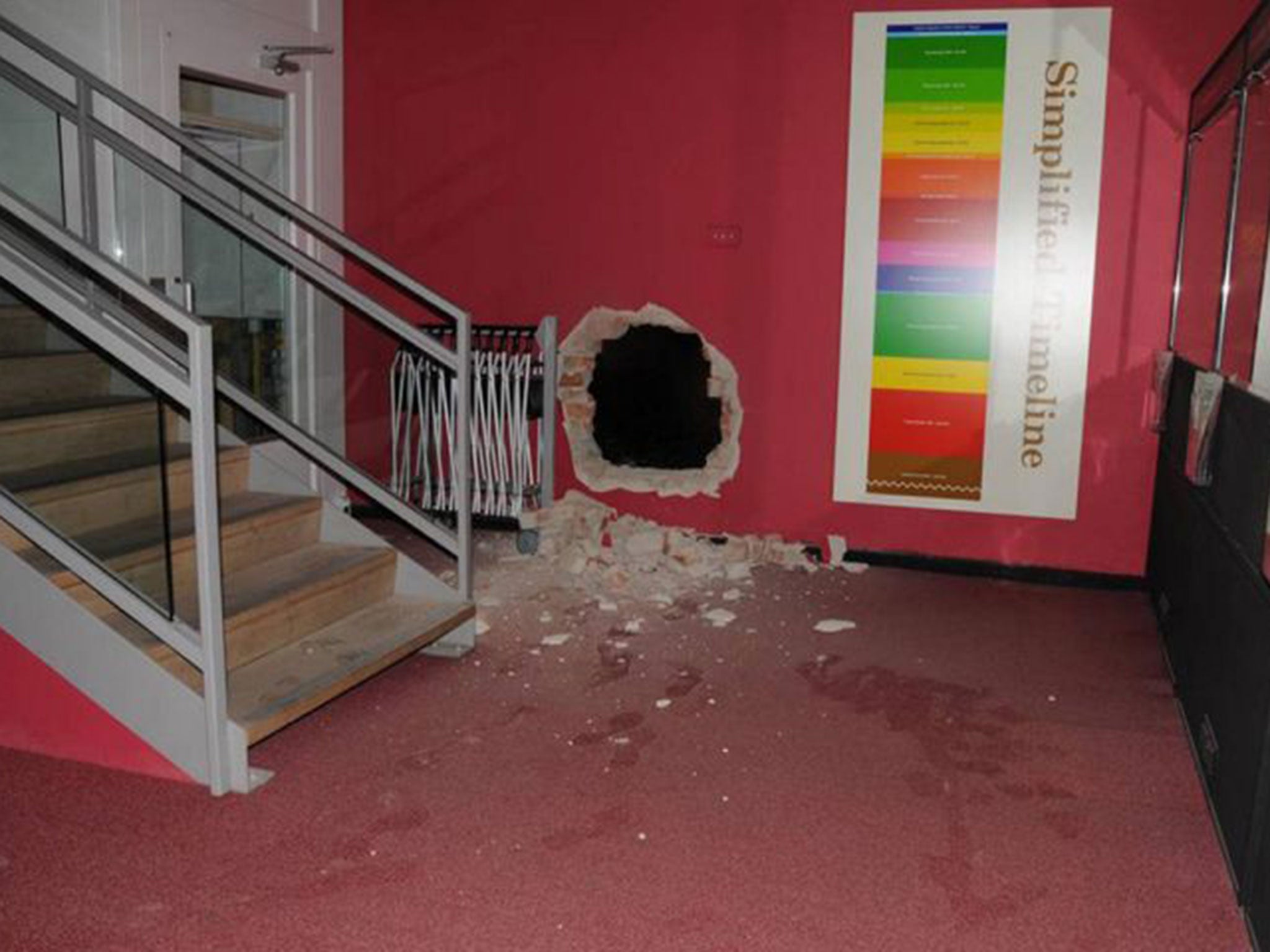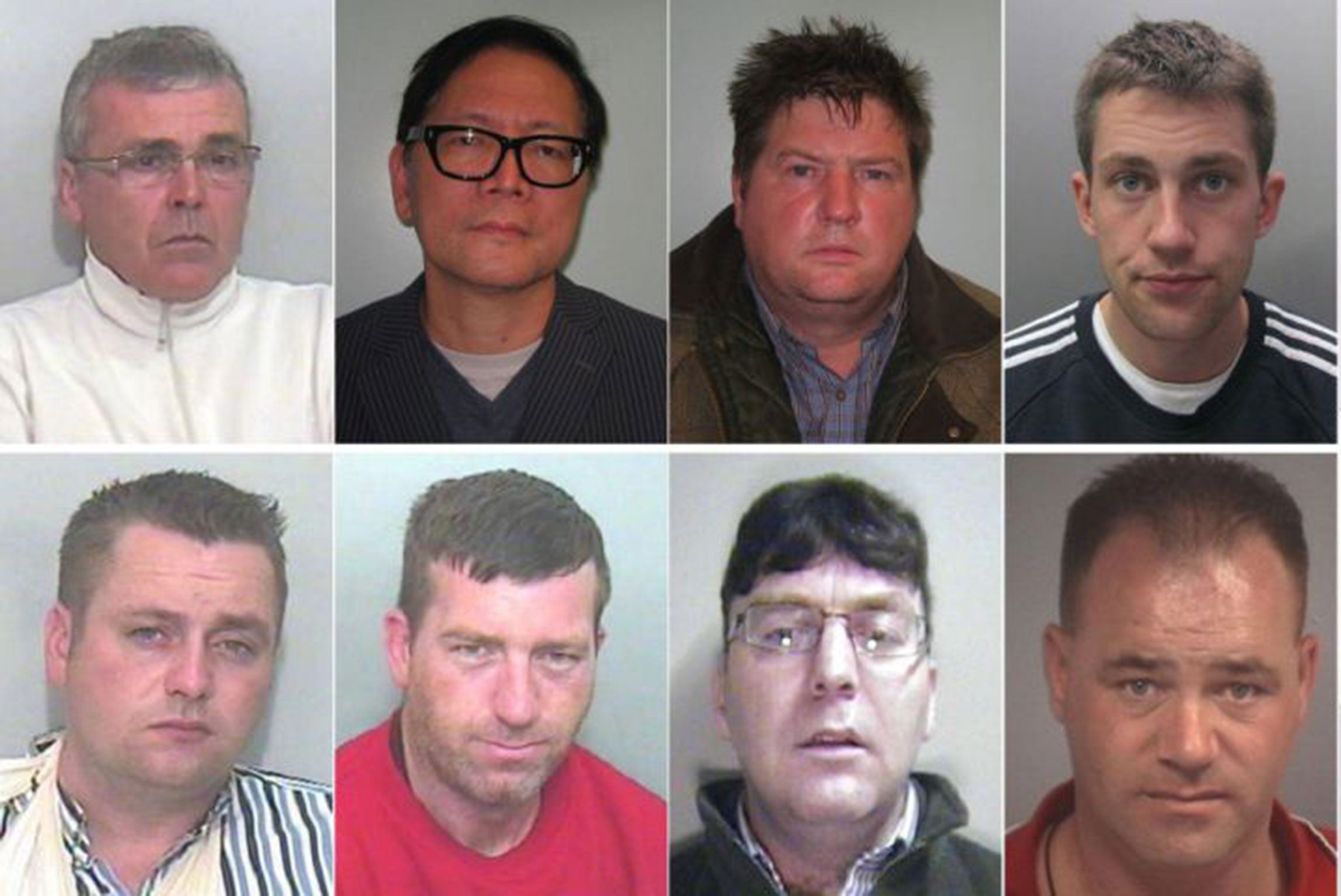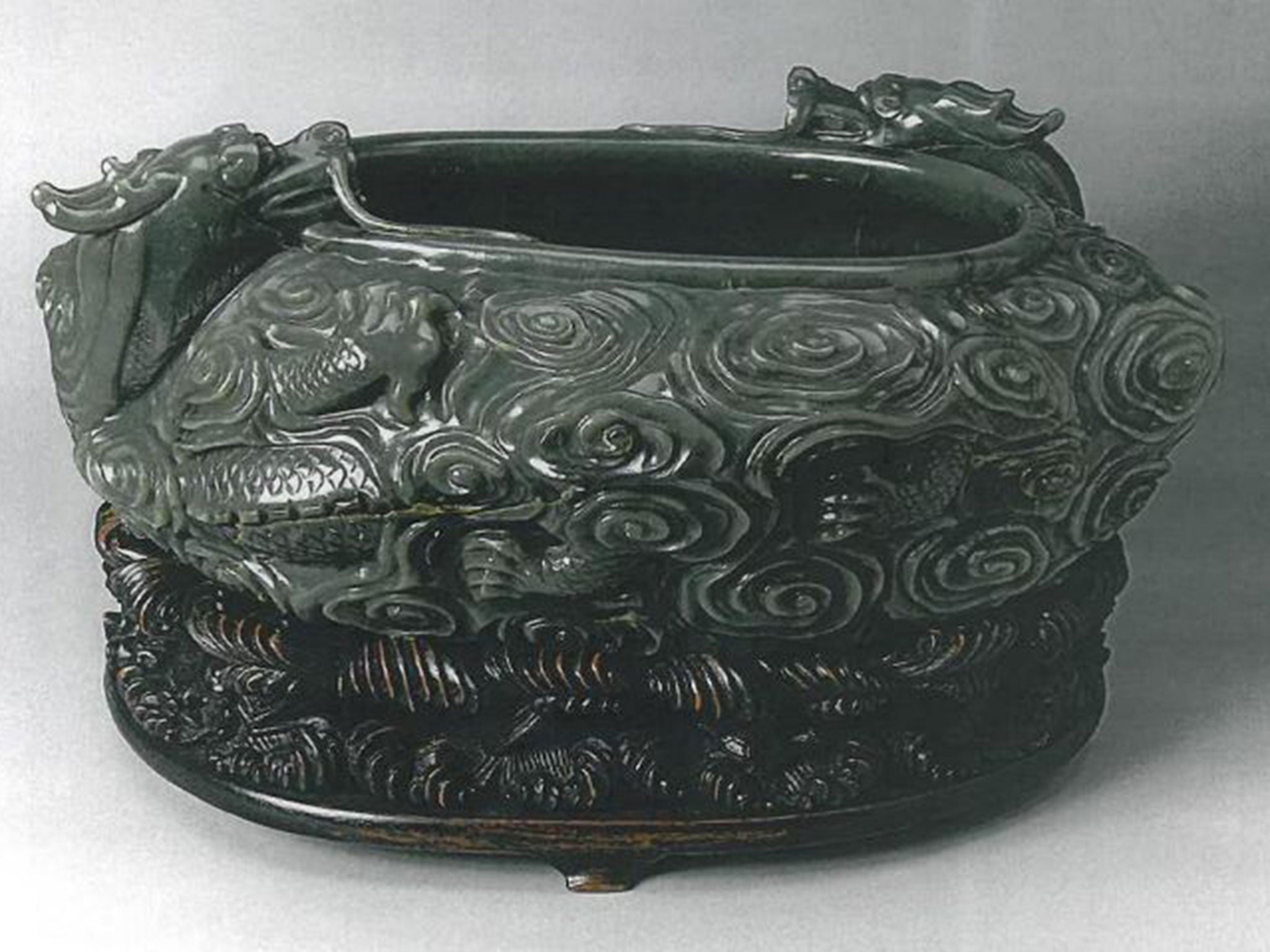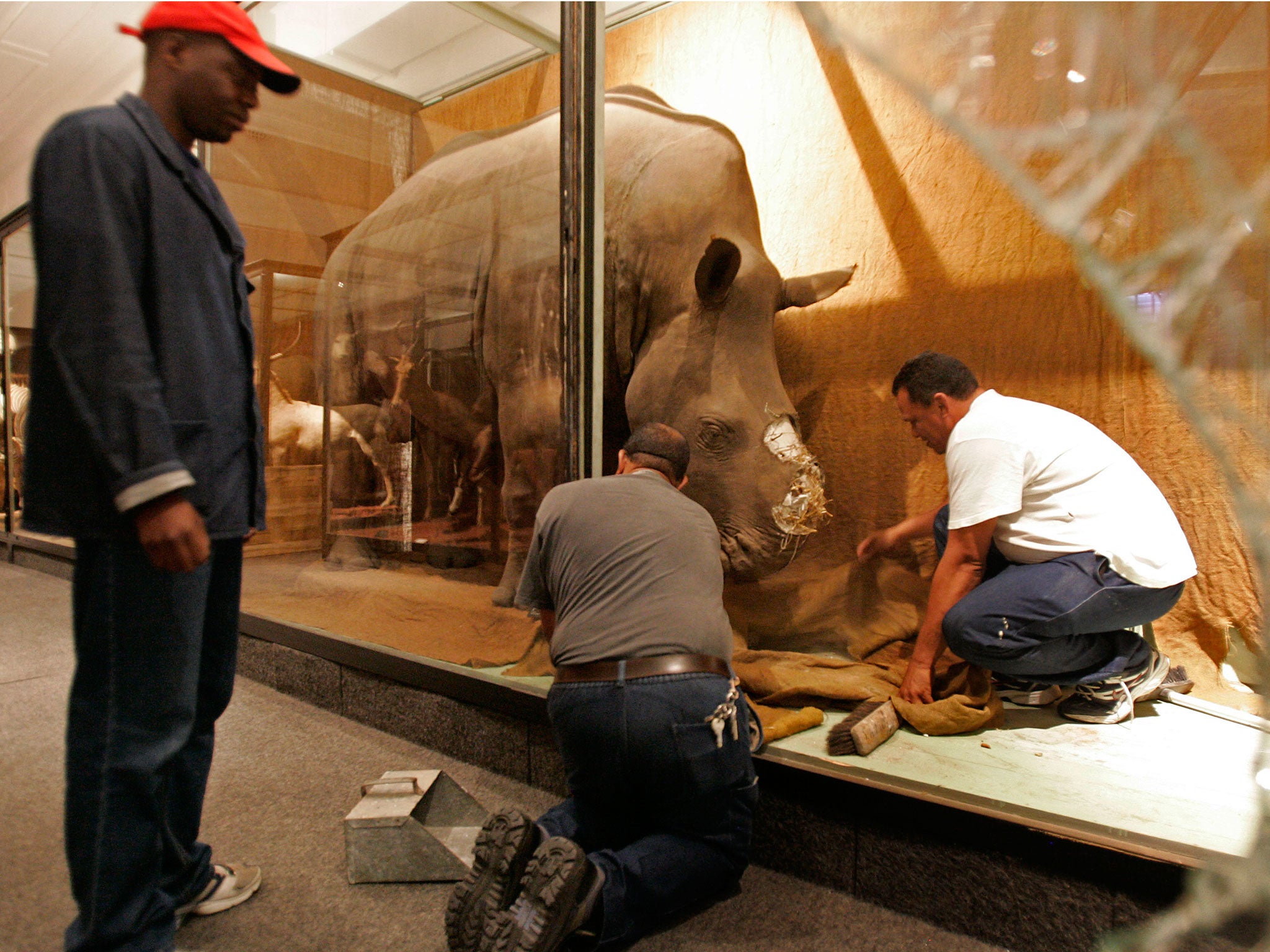Rathkeale Rovers: How an enthusiastic gardener and his Leylandii trimmings helped to bring gang leaders to justice
The remarkable story of one of the world’s most prolific criminal groups can finally be told

As criminal strikes go, it was fast, clinical and supremely lucrative. Within three minutes of the alarm sounding at Durham University’s Oriental Museum, the team of hired criminals were in, out and on the telephone to their criminal overlords with news of a £16m haul of Chinese jade antiquities.
To avoid being captured red-handed, the team stashed the Qing dynasty jade bowl and a figurine on waste ground on the outskirts of the city and slipped away into the night. But when a second team of “retrievers” turned for a pre-arranged collection 16 hours later, the loot was nowhere to be found.
The plotters were undone by an enthusiastic and unwitting gardener who had trimmed his Leylandii hedge, thrown the cuttings over his fence and covered millions of pounds of criminal proceeds under the debris.
“They hadn’t put a pirate-style cross where the stash was,” said prosecutor Robert Davies, at the trial of the some of the ringleaders of the operation.

The failure to find the hidden loot resulted in what police later called “Panic Day” of visits to the wasteland at the Meadowfield Industrial Estate and frantic phone calls between the hired criminals and senior managers of the syndicate of experienced antique thieves.
They never found the loot, but that series of calls provided police with the breakthrough that eventually allowed them to bring senior members of the feared “Rathkeale Rovers” to justice after a four-year investigation.
The remarkable story of one of the world’s most prolific criminal groups can finally be told after the last of 14 men were convicted of a series of increasingly brazen raids on British museums, auction houses and stately homes for rhino horn and precious jade for the voracious Far-Eastern market.
At the centre of an epidemic of raids was a tight-knit extended family group of Irish Travellers involved in illegal activity from North America to Australia. Every year, members of the group emerged like a “starburst” from the Irish town of Rathkeale and scattered across the world.
The group came to the attention of British law enforcement after two of Britain’s biggest burglaries in legal history within nine days that netted more than £30m in precious artefacts. While the raids were carried out by small-time villains, they were masterminded by members of the British-based branch of the Rovers from the safety of their traveller sites.
They included tobacco smuggler John “Cash” O’Brien and his son Richard Sheridan, the spokesman for Travellers at Dale Farm in Essex, who led the ultimately unsuccessful anti-eviction campaign from the site with the support of the actress and rights activist Vanessa Redgrave.
Police believe that the jade bowl snatched from a cabinet at the Durham museum was stolen to order for a buyer in the Far East, arranged by middle-man Chi Chong Donald Wong – an antique-watch dealer with a string of multi-million-pound properties in London and Hong Kong.
In the days after the April 2012 raid, members of the burglary team and a group of East London gangsters turned up to try to find the bowl. Their sense of desperation was revealed in a series of text messages between burglar Lee Wildman and his girlfriend after police forced his car to stop and found his phone hidden down his pants. “Oh god, gone then babes?” she asked in one text. “Yep,” he replied.
Within days, the gang had written off the failure and were plotting an even larger raid to secure a replacement. On the same day that a police search recovered the Durham jade bowl after kicking aside the leylandii, the burglars hit the renowned Fitzwilliam museum in Cambridge.
A CCTV camera mounted on the side of the museum captured the burglary team of four men in hoods sauntering up to the museum, one carrying a heavy-duty angle grinder to cut through a barred and shuttered window.
They are next seen returning to their white van, two men staggering under the weight of a holdall containing 18 precious and delicate artefacts with a conservative value of £15m. Police believe the value would actually have been much higher in the booming Chinese market.
But then they dropped the bag – in a bungle that must have made “pretty unhappy viewing for the curator”, said Mr Davies. It was also a bad move for one of the senior burglars who paid for the carelessness of his team with a savage beating, according to sources.
The haul included three jade bowls, including one that police believe was a direct replacement for the one lost in Durham. The items are believed to have been whisked out the country and have never been seen again.
The double raid sparked alarm that went right to the top of Government. Two months after the Fitzwilliam raid, the Home Office and police decided that something needed to be done to fight an organised crime gang that had been targeting museums across the continent.
Superintendent Adrian Green was appointed its head: he was a Durham officer who had already arrested many of the minor players over the Oriental Museum job. The major players, however, were more difficult to reach.
As a first step, the taskforce contacted police forces across the UK for details of incidents involving jade, rhino horn, elephant tusk, auction houses or museums. And not just crimes – suspicious incidents and possible reconnaissance trips, too. They received details on 30 incidents. The churn of information also revealed that the Durham museum had been hit twice previously, once when a rhino libation cup was stolen and was not noticed for months.


Other crimes included an attempted theft of a large rhino head on display at Norwich’s Castle Museum in February 2012 (the thieves fled after being caught in the act) and a bungled robbery at Gorringes Auction house in Lewes, East Sussex, when a group of hired hands leapt over the cabinets and tried to snatch a £60,000 rhino-horn libation cup. They fled with the wrong one – it was made of bamboo.
The hired hands included members of the “Custom House boys”, an east London street gang more accomplished at drug-running operations out of the capital than the selection of fine art.
The robberies in Britain were part of a much wider picture of criminality across Europe. A year before Supt Green’s team started work, the European policing agency Europol released details of its own assessment of an organised crime group stealing rhino horn across Europe.
Europol charted dozens of robberies of rhino horn and had identified an organised crime group Irish Travellers – dubbed by the media as the Rathkeale Rovers or the Dead Zoo gang – as being behind them. A single rhino horn – valued for its (ineffective) medicinal qualities in China and the Far East – could reach €200,000 (£156,000), it said. The group was active in North and South America, South Africa, China and Australia.

For years, the gang had been targeting museums, but because there were only a few raids in each country, nobody had joined up the dots.
The criminals reinvested the proceeds in property and luxury cars – much of it back in Rathkeale in Co Limerick – while continuing to live in their caravans. All of the key players were still in circulation.
The British team fed their information about telephone numbers, suspects, car number plates into the intelligence pool gathered by Europol. “It lit up their database like a Christmas tree,” a police source told The Independent.
The phone data led back to one family clan – the “Kerry” O’Briens. The head of the family was in Rathkeale, but family members had spread wide to Wolverhampton, Cambridgeshire and Essex. They were a colourful bunch. John “Cash” O’Brien was a multi-million-pound tobacco smuggler who, despite looking like a biblical Noah with a flowing white beard and walking stick, was a noted international criminal. His son was Richard Sheridan – the champion of the Dale Farm Travellers.
One of Cash’s nephews Richard “Kerry” O’Brien junior had been jailed for six months in the United States for trying to illegally export four black rhino horns after unwittingly buying them from an undercover agent in Colorado.
Although these senior managers carried out the recces of targets, they never got their hands dirty, and organised dispensable teams of minor criminals to carry out the smash-and-grabs.
To convict them, police had to prove that they were the controlling minds of the operation. To do that, they were faced with an enormous task of tracing a network of mobile phones that were dropped and swiftly replaced with new numbers by members of the gang.
They also tried to follow them as they moved around the country. Wong – who claimed he was a partner of a London watch company and shuttled between Britain and Hong Kong - was put under surveillance. As soon as he landed back in Britain, he was immediately on the phone to members of the gang.
When police finally arrested Wong they searched his £1.6m home in south London and found a suitcase with a flight ticket inside. The name on the ticket was a member of the O’Brien clan.
Police suspected that when the British museums were raided, the proceeds were passed to Wong inside suitcases and he organised their movement back to the Far East for his paying customers.

But it took two years before police were in a position to act against the men they believed were responsible for the raids, having amassed the CCTV, flight manifests, phone records and penalty tickets that pointed to their involvement.
On 10 September 10 2013, about 900 officers, including specialist searchers and riot teams, backed by tracking aeroplanes, moved on addresses in London, Wolverhampton, Belfast, Spain, Smithy Fen in Cambridgeshire and Dale Farm in Essex. The Irish Gardai targeted addresses in Rathkeale.
One of the key players, Daniel “Turkey” O’Brien, was extradited from Spain to serve a jail sentence after robbing a rhino horn dealer and dragging him down the road after a deal went sour in a McDonald’s car park in Newark.
Among those arrested in September 2013 was Richard Kerry O’Brien senior, in Rathkeale. The businessman was not charged and has since railed against his treatment. He is suing Bloomberg Businessweek for $23m after he says he was wrongly accused of belonging to the Rathkeale Rovers.
But in a series of three trials that can only be reported today, members of his family – and the teams of criminals that they recruited – were convicted for their roles in the British heists. They included Richard Sheridan and his father, and the middleman Wong. Two of Richard Kerry O’Brien’s senior’s sons were also convicted in a final trial of four men considered to be the generals of the operation, with strong links to Rathkeale.
Since the operation, the museum raids have virtually stopped. Most museums who had rhino horn have taken them down and replaced them with fakes.
